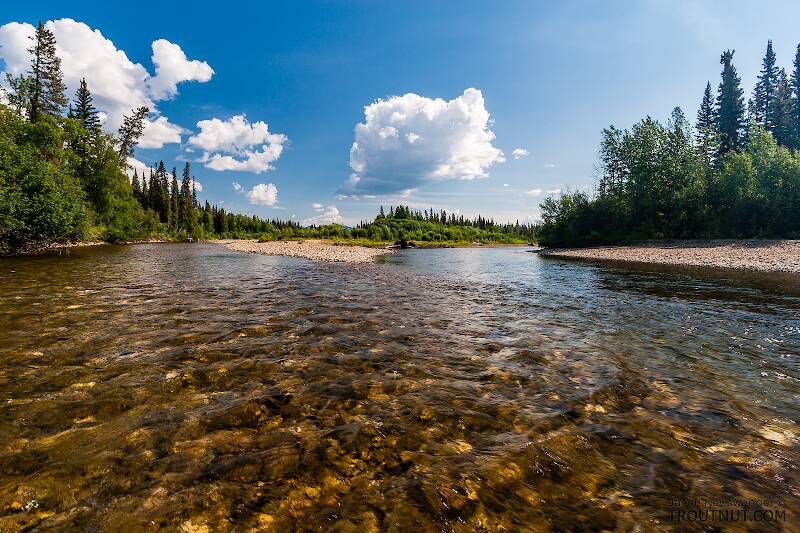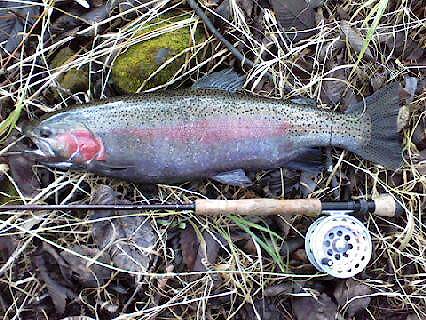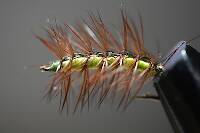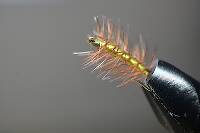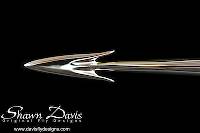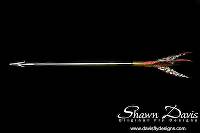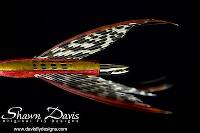
Blue-winged Olives
Baetis
Tiny Baetis mayflies are perhaps the most commonly encountered and imitated by anglers on all American trout streams due to their great abundance, widespread distribution, and trout-friendly emergence habits.
Featured on the forum

This is an interesting one. Following the keys in Merritt R.W., Cummins, K.W., and Berg, M.B. (2019) and Jacobus et al. (2014), it keys clearly to Ephemerella. Jacobus et al provide a key to species, but some of the characteristics are tricky to interpret without illustrations. If I didn't make any mistakes, this one keys to Ephemerella mucronata, which has not previously been reported any closer to here than Montana and Alberta. The main character seems to fit well: "Abdominal terga with prominent, paired, subparallel, spiculate ridges." Several illustrations or descriptions of this holarctic species from the US and Europe seem to match, including the body length, tarsal claws and denticles, labial palp, and gill shapes. These sources include including Richard Allen's original description of this species in North America under the now-defunct name E. moffatae in Allen RK (1977) and the figures in this description of the species in Italy.

Troutnut is a project started in 2003 by salmonid ecologist Jason "Troutnut" Neuswanger to help anglers and
fly tyers unabashedly embrace the entomological side of the sport. Learn more about Troutnut or
support the project for an enhanced experience here.
Msmith14 on Mar 28, 2012March 28th, 2012, 11:43 am EDT
Hi I have been having trouble tying the elk hair on the back of the fly. It always twists around the fly when I am wip finishing it and it always is lose enough to be moved around the hook no matter how tight I tie in on. Can anyone help me with this problem?
Thanks.
Thanks.
Taxon on Mar 28, 2012March 28th, 2012, 1:05 pm EDT
There are things which could be contributing to the problem you are experiencing:
1) not laying a thread base beneath the tie-down point,
2) not applying sufficient pinching pressure between your left thumb and forefinger to make sure the bunch of elk hair stays squarely and tightly atop the hook shank, and
3) not maintaining sufficiently steady thread tension during the entire tie-down process.
It is also important to apply cinching tension to each wrap, but not by pulling down on the on the back side of the hook. but rather, by pulling up on the front side of the hook. Although this is somewhat counter-intuitive, in my experience, it will help avoid the spinning result you are experiencing.
Another thing you might want to do, is to apply one or two half-hitches at the tie-down point, after taking the final tie-down wrap, to lessen the likelihood of your tie-down wraps loosing tension later.
Hope this helps,
1) not laying a thread base beneath the tie-down point,
2) not applying sufficient pinching pressure between your left thumb and forefinger to make sure the bunch of elk hair stays squarely and tightly atop the hook shank, and
3) not maintaining sufficiently steady thread tension during the entire tie-down process.
It is also important to apply cinching tension to each wrap, but not by pulling down on the on the back side of the hook. but rather, by pulling up on the front side of the hook. Although this is somewhat counter-intuitive, in my experience, it will help avoid the spinning result you are experiencing.
Another thing you might want to do, is to apply one or two half-hitches at the tie-down point, after taking the final tie-down wrap, to lessen the likelihood of your tie-down wraps loosing tension later.
Hope this helps,
Shanti on Mar 28, 2012March 28th, 2012, 1:07 pm EDT
Sounds like you are tying a quite bulky wing. Use less elkhair and make sure you have a good threadbase underneath.
If you want a thick wing, tie it in layers with an underwing and an over dito.
A small drop of varnish will secure things nicely.
I tie some of my elk hair caddis with an underwing of cdc.
If you want a thick wing, tie it in layers with an underwing and an over dito.
A small drop of varnish will secure things nicely.
I tie some of my elk hair caddis with an underwing of cdc.
Somewhere, right now, a fish is rising.
And you´re at the computer..
And you´re at the computer..
Oldredbarn on Mar 29, 2012March 29th, 2012, 6:03 am EDT
I sometimes throw a couple wraps of thread behind or underneath the wing and this can help "lock" it in place...The older version would have you pulling up the butt ends of the elk and wrapping and finishing the fly off between the hook eye and the butts of the elk...Then trim the head to shape. This can secure them in place as well. So you would have wraps at your tie down area and then again in front of the trimmed head of the fly.
I agree with Roger & Joakim concerning bare vs thread wraps on hook shank and also not over doing it...Too much hair will just tip your fly over on its side.
Spence
I agree with Roger & Joakim concerning bare vs thread wraps on hook shank and also not over doing it...Too much hair will just tip your fly over on its side.
Spence
"Even when my best efforts fail it's a satisfying challenge, and that, after all, is the essence of fly fishing." -Chauncy Lively
"Envy not the man who lives beside the river, but the man the river flows through." Joseph T Heywood
"Envy not the man who lives beside the river, but the man the river flows through." Joseph T Heywood
Softhackle on Mar 29, 2012March 29th, 2012, 4:08 pm EDT
Hi,
Some years back, after reading an article in Fly Fisherman, I started tying my Elk Hair Caddis reversing the hair, placing the hair tips at the head,the clipped butts toward the back. The butts can be clipped into a great wing shape, and the tips are a bit easier to tie on, because the tips are finer. It kind of resembles the famous Goddard Caddis, but retaining the effect of the original pattern.
By the way, all the other tips given are great!
Mark
Some years back, after reading an article in Fly Fisherman, I started tying my Elk Hair Caddis reversing the hair, placing the hair tips at the head,the clipped butts toward the back. The butts can be clipped into a great wing shape, and the tips are a bit easier to tie on, because the tips are finer. It kind of resembles the famous Goddard Caddis, but retaining the effect of the original pattern.
By the way, all the other tips given are great!
Mark
"I have the highest respect for the skilled wet-fly fisherman, as he has mastered an art of very great difficulty." Edward R. Hewitt
Flymphs, Soft-hackles and Spiders: http://www.troutnut.com/libstudio/FS&S/index.html
Flymphs, Soft-hackles and Spiders: http://www.troutnut.com/libstudio/FS&S/index.html
Wiflyfisher on Mar 29, 2012March 29th, 2012, 4:57 pm EDT
To add to the above comments, applying some good wax on the thread before and after can really help too. I am not talking the new waxes, but some of the older type waxes that have lots of grab. As others have said.. less is better when tying on the hair.
John S.
https://WiFlyFisher.com
https://WiFlyFisher.com
Sayfu
Posts: 560
Posts: 560
Sayfu on Mar 8, 2013March 8th, 2013, 6:10 am EST
AGH, the ol elkhair caddis super glue fly! :) All comments above definitely come from experienced tiers. I like to lift the butts in front of the wing, after making a number of wraps, and place a few wraps between the wing, and the eye feeling it pinches it in, and less likely to rotate.
Quick Reply
Related Discussions
Topic
Replies
Last Reply

